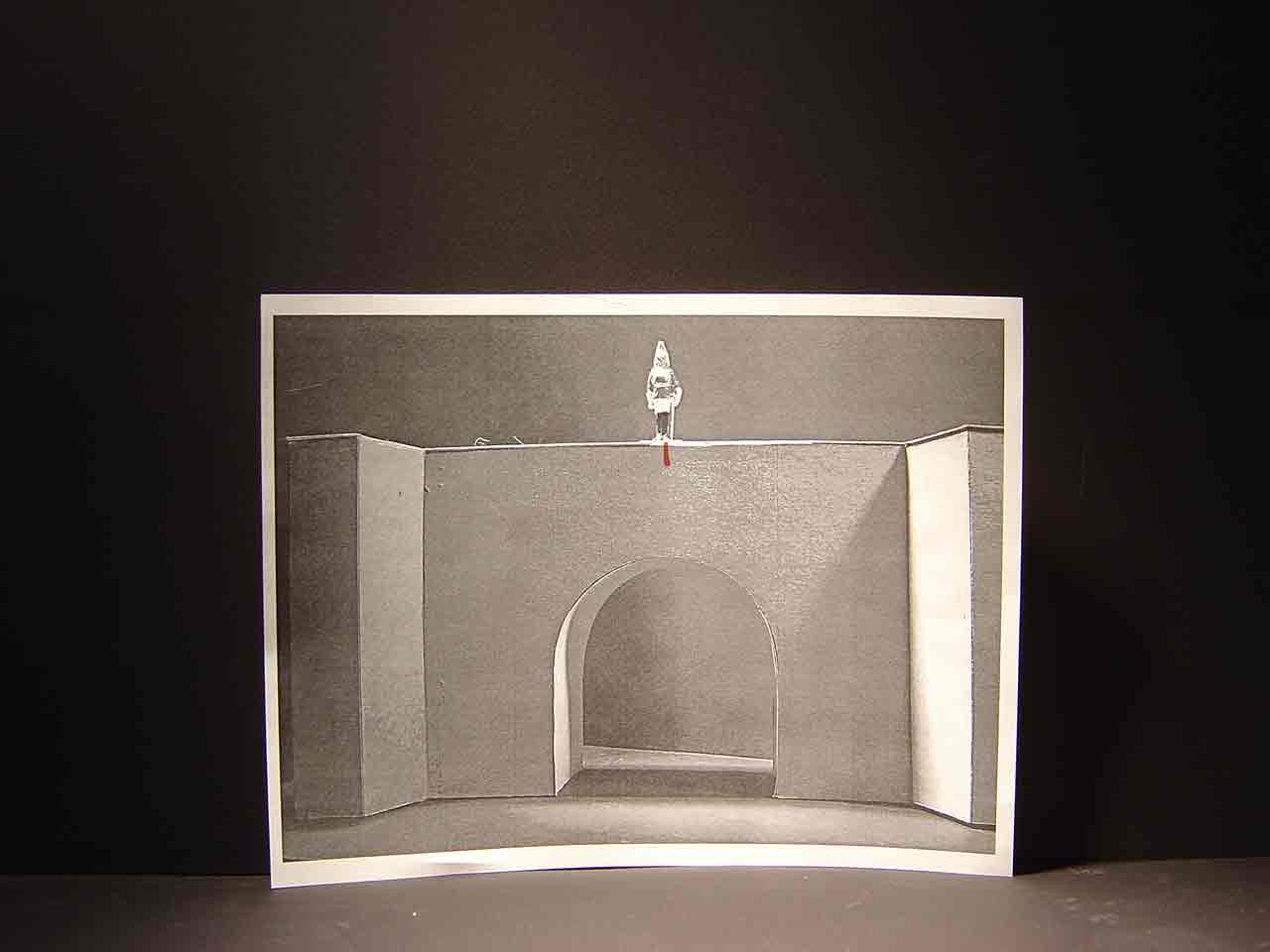--more--

In this case, the planning print was made on a monochrome printer loaded with ordinary copy-grade paper, because a color print on photo-quality paper was not essential for this particular project.
As soon as the planning print was ready, the artisan took a ruler and made a red mark at the exact center over the curtain wall's entrance arch. The red mark can be seen in the accompanying photo. Why did the artisan make a red mark at the exact center of the entrance arch? The following transcript of a discussion between the Artisan and the Advisory Aesthetician provides the answer to this question.
(Transcript begins)
"Where should the merlons go?" asked the Advisory Aesthetician.
"The merlons should go where they'll do the most good for the defense of the castle," replied the Artisan.
"I see that you placed a red mark at the exact center of the entrance arch", said the Advisory Aesthetician. "Is that a good place to put the first merlon?"
"Decidedly not!" exclaimed the Artisan. "In my opinion, the center of the entrance is a good place for a crenellation, not for a merlon."
Here the Artisan was explaining that a crenellation, which is an opening that separates one merlon from the next merlon in the row, should appear in the exact center of the entrance arch's battlement.
"Suppose an enemy soldier is approaching the entrance arch," continued the Artisan. "In order to stop him from entering the entrance arch (assuming, of course, that he has not been invited to enter), a defender standing upon the wall-walk might persuade himself to launch a bolt between the eyes of this uninvited fellow."
Here the Artisan was referring to the armament of the castle's defenders: the crossbow. The crossbow was used by a castle's defenders to launch a deadly missile, known as a bolt, at an enemy.
"I can understand why this decision on the part of the defender might be prudent in the military sense, assuming, of course, that all efforts at conciliation have failed," said the Advisory Aesthetician.
"Nevertheless," he continued thoughtfully, "how does this putative judgment on the part of the defender lead to the placement of a crenellation, as opposed to a merlon, at the exact center of the entrance arch?"
"This question is easily answered in terms of the theory of defensive tactics," said the Artisan. "Since the uninvited enemy soldier is advancing directly toward the entrance arch, the arch's defender would best be served if he possessed a clear view of the entire entrance path. A crenellation at the center of the wall-walk above the arch would provide him with such a view."
"I see," said the Advisory Aesthetician. "You mean, that if we placed a merlon, which is really an opaque defensive shield, at the exact center, the defender would be deprived of his preferred defensive viewpoint."
"Quite correct," said the Artisan. "We must keep in mind that we want the bolt from the defender's crossbow to pierce the enemy's skull directly between the eyes. This action provides the best probability of crushing the frontal lobes of the uninvited soldier's brain. It is believed, by some, that sudden damage to an enemy's frontal lobes will result in an immediate reduction of his capacity for cogent thought."
"Very interesting", said the Advisory Aesthetician. "I understand that you mean that an uninvited visitor, with a crossbow bolt newly embedded in his frontal lobes, might not make the best decisions, militarily speaking, to pursue effective tactics."
"That, indeed, is my assertion," replied the Artisan.
(Transcript ends)
Go to top of page